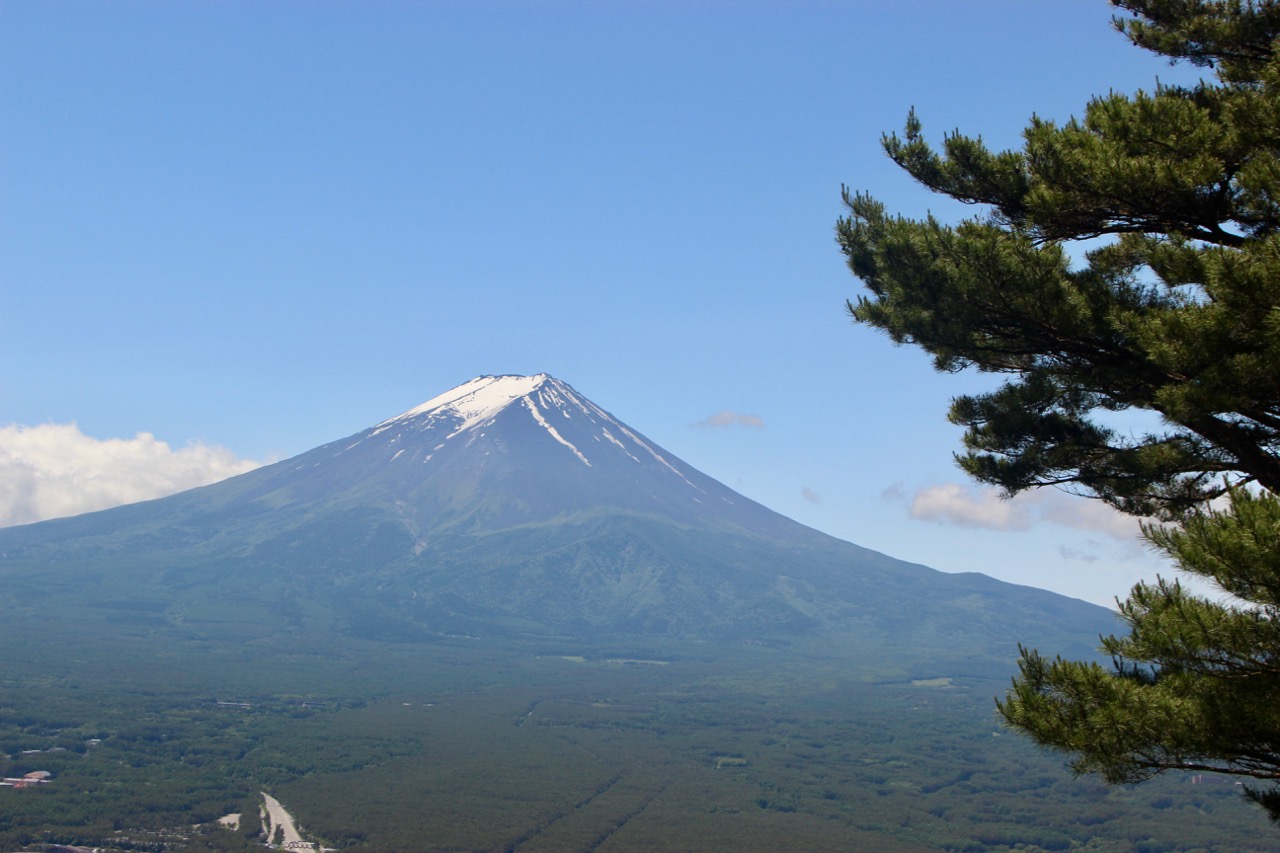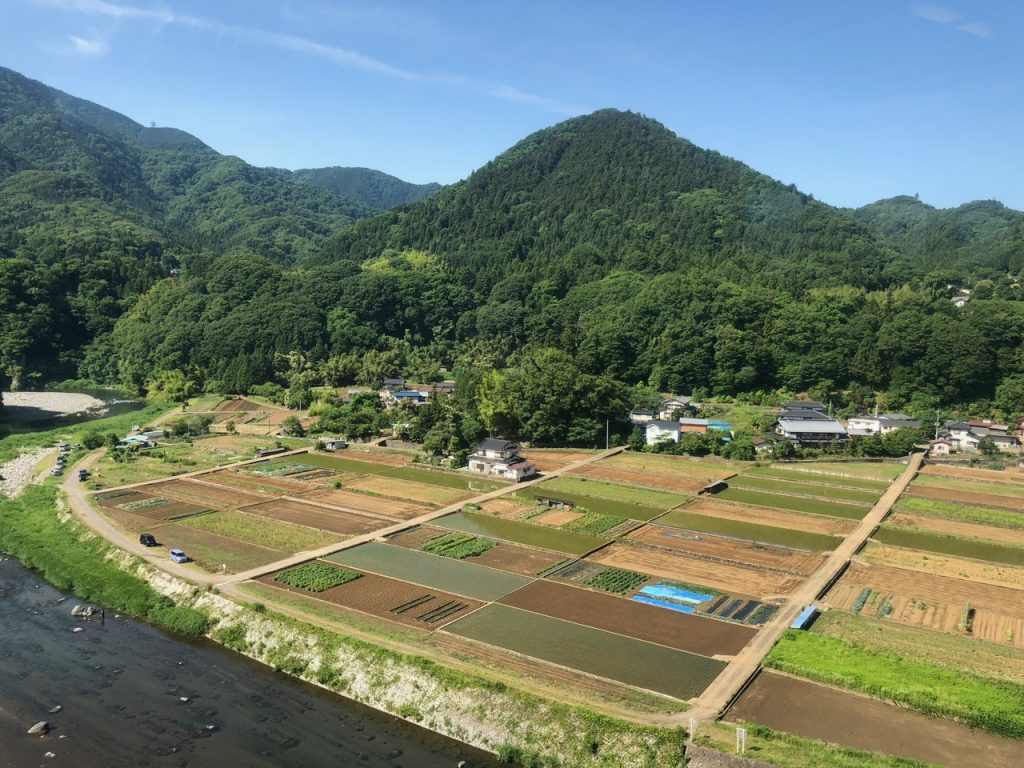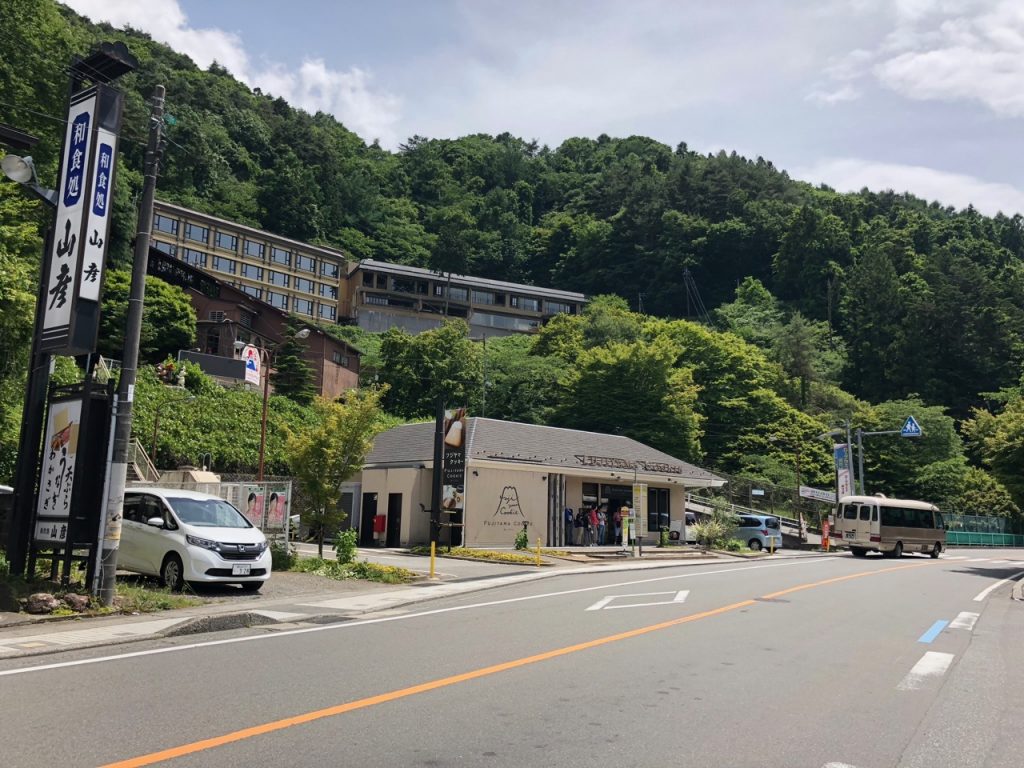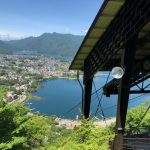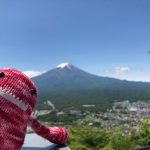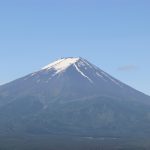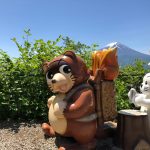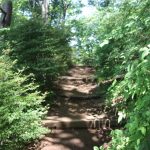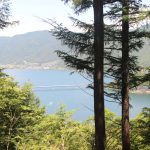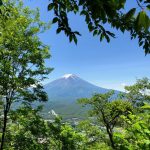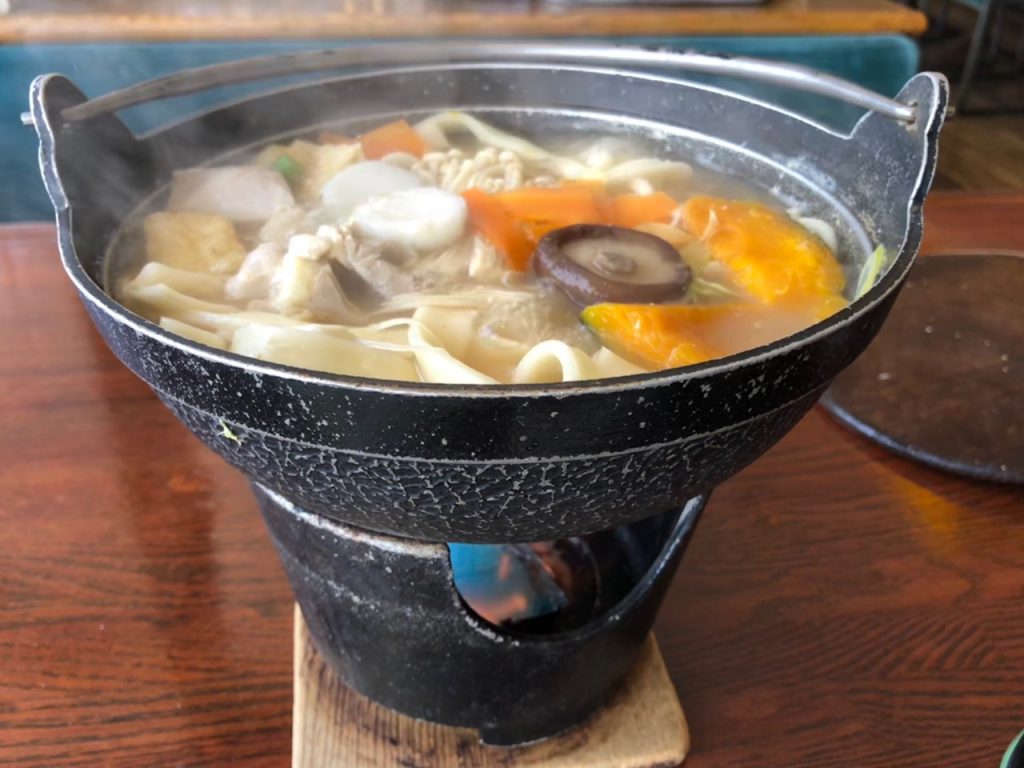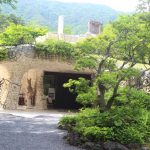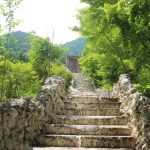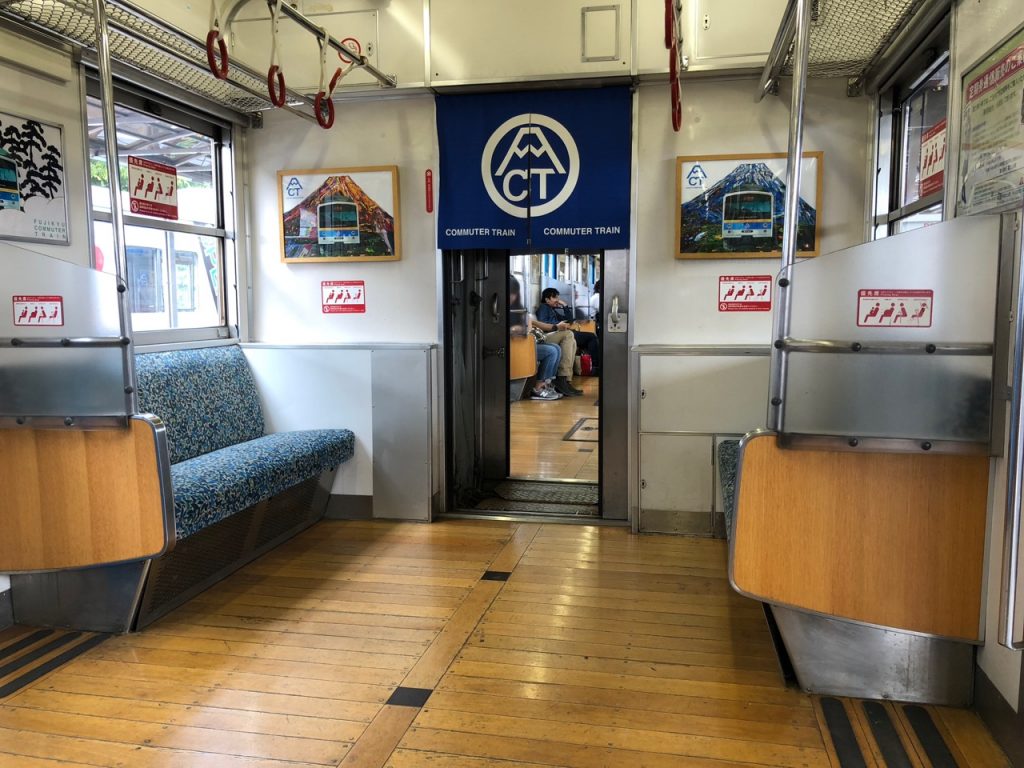Another day, another pre-5am wakeup and copious amounts of milk tea. Today is the one day the weather lady predicted would be excellent, and so I wasted not this opportunity and headed out to Fuji today, hoping the peak would be visible. I have only seen Fuji from a distance, visible on clear days from my host parents’ place in Chiba. Even across the bay, it was incredibly majestic, and I liked watching the sun set behind it in the evenings on clear nights. I passed on an overnight climb of Fuji in college (and looking back on the time, I was not in shape, so probably would have died or fallen into the caldera, never to return), and it’s too early in the year to do that this time.
It takes about 2.5 hours to get to the Fuji Five Lakes area from central Tokyo (if one is lazy and lacking the JR pass, and we have established I belong to this club). As soon as you get out past Takao, the scenery changes from city to charming city centers nestled in between mountains.
The train passed over rice fields and through mountain tunnels for the last hour of the ride, Mt Fuji peeping out from behind other mountain peaks as we drew ever closer. So far, it was visible and very sunny. Yeah!
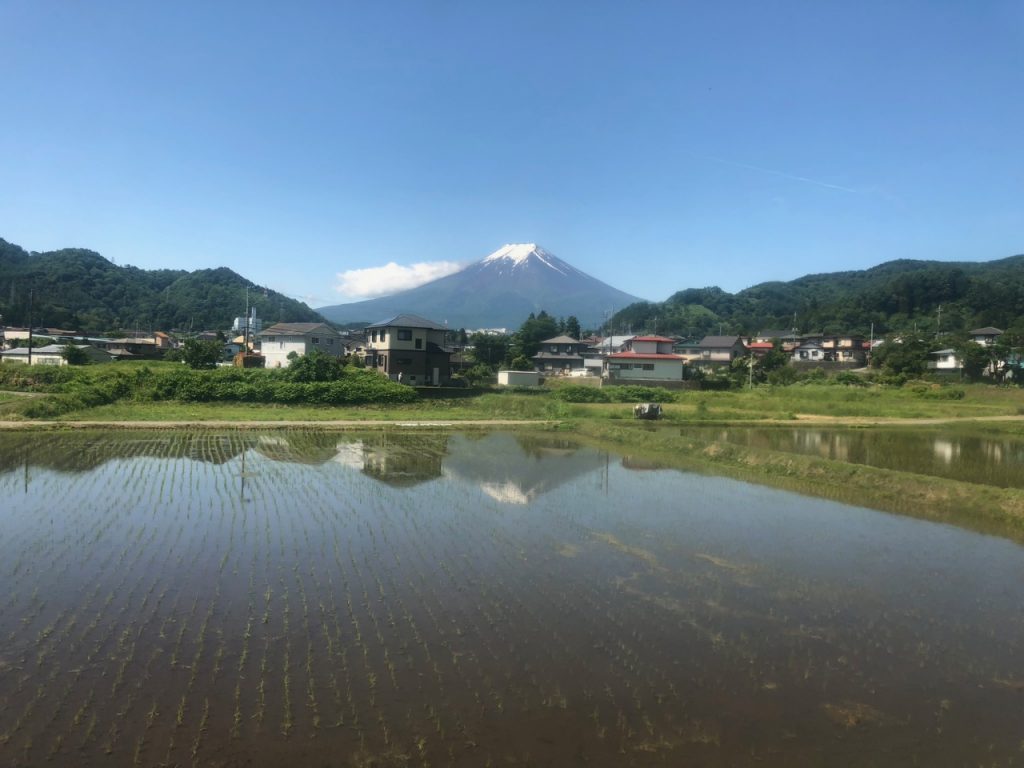
Kawaguchiko, the largest of the Fuji five lakes, was my end destination. Somehow I had forgotten about Chinese tourists until this point – and Kawaguchiko town was swarming with tourists from everywhere. Even at 930 AM, this place was crowded. It had a resort town feel to it, reminding me of the time we stopped in Hanmer Springs in New Zealand. There were alpine guesthouses and hotels everywhere, and a souvenir shop named Fancy (it was all right).
Since the Mt Fuji gods were smiling upon me, I booked it to the Kachi Kachi ropeway to get my Fuji-viewing in. The ropeway takes you up 200 meters, to a height of just over 1000 meters above sea level. Also, I learned on the internet that this particular ropeway got its name from a folk tale in which a rabbit tortures a tanuki, lighting him on fire in the end. Dark – but maybe no darker than roadrunner cartoons, if you think about it. There are happy cartoon characters depicting scenes from the folktale all over the observation platform.
I was enticed to walk down by the promises of a hydrangea garden, but ignoring all the things I know about hydrangeas, signs included, I was disappointed to find that the plants themselves have not yet bloomed. Oh well – it was a beautiful walk down the mountain. The path was steep at times, and a bit muddy, but worth the half-hour trek. I crossed one other person who was walking up (lol fool) – otherwise it was me and the cicadas and birds all the way down.
I’m only here for the Fuji, so I also decided to board the sightseeing boat that takes you for a quick jaunt around the lake for about $10.
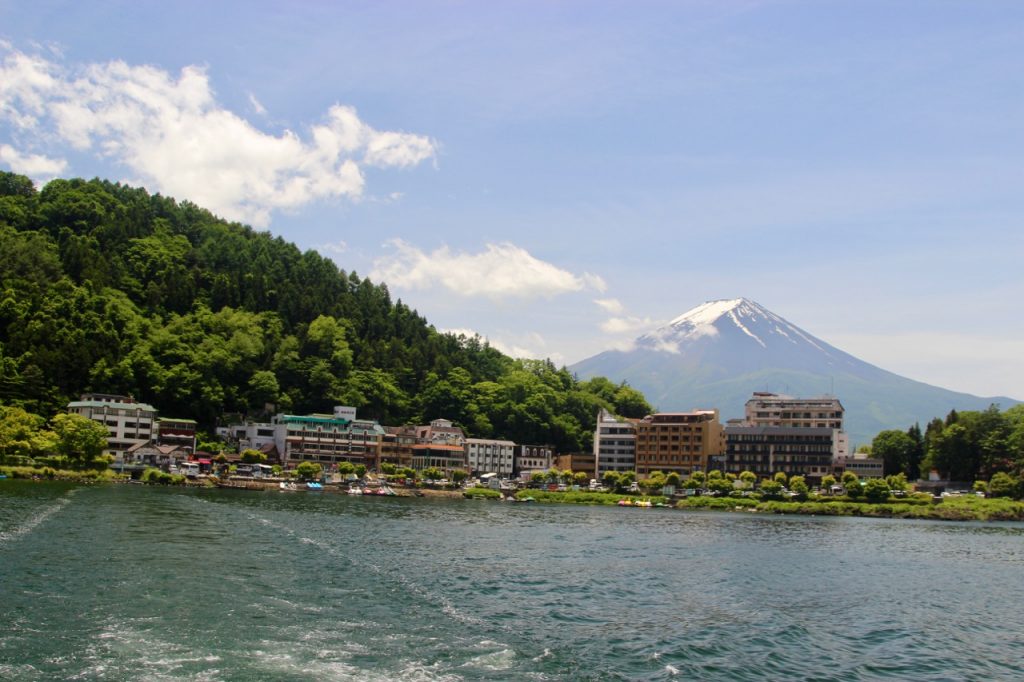
My lunch was a bubbling pot of Hoto noodles had at a lakeside restaurant (creatively named Lake Side). Hoto noodles are Kawaguchiko’s food thing (Japan loves food things). They are cooked in a little pot over a flame and come with delicious Japanese pumpkin. They bubble for 10 minutes at your table before they’re ready to eat, and are a thicker, flatter noodle. Like…udon on steroids. Very tasty.
I had one final stop on my Kawaguchiko adventure – seeing the Kubota Itchiku art museum. Kubota is a renowned textile artist, who revived the hand-dye method for kimono creation known as tsujigahana. The museum was towards the end of the bus line, and I befriended a Thai lady who was visiting Japan (and Kawaguchiko!) for the fourth time with her mother and sisters. She was off to a hot spring. Not me. I’m off to….art!
I foolishly got off a stop early, and walked from the Monkey Show stop to the museum. The Kubota museum is art in and of itself – it is surrounded by a small artificial waterfall and other water features, and its cafe has a view of Mt Fuji. I did not pay extra for more cafe, so you just get some pictures of the outside of the museum.
The museum had an extremely interesting video about his life (he died in 2003 at the age of 85). He became interested in the technique after seeing some of the cloth in a museum. However, world war II happened to him, and he was interned in Siberia for a time. Somehow he found the sunsets extremely inspiring despite the harsh conditions, and when he was released and returned home, he dedicated his life to making textiles that could reproduce the glory of the setting Siberian sun. He finally figured out the technique at the tender age of 60, and dedicated his life to making kimono in that style from then onwards. He’s the only living artist to have a display at the Smithsonian (at the time of the DVD making), and some of his kimono can be assembled to form a greater image.
Sadly, photography was not allowed inside. Photos wouldn’t even do the fabric justice – the dyeing technique gives them very vivid colors. Some sparkled, and all had extremely fine stitching and vivid colors. He built the museum in the early 90s and his kimono are on display there permanently. Sadly, he never finished his magnum opus of 80 assembled kimono.
If you are ever in Kawaguchiko, this museum is highly worth a visit.
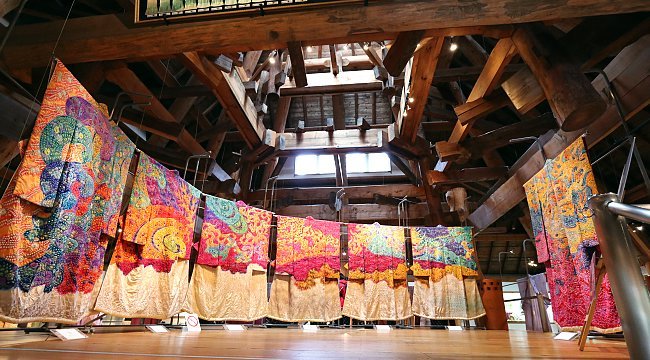
I rode the extremely packed bus back to the station and began my 2.5 hour journey back to Tokyo. Fortunately, most of the people in Kawaguchiko seemed to have arrived by bus, and the train was (thankfully) deserted. It was just me and some manspreading German bros all the way back to Otsuki. I witnessed a Japanese lady sit next to one and shove his leg over with a slightly enraged sumimasen. Don’t take up two seats with your dumb wide legs!
To round out my evening, I stopped into a small ramen shop near my ABB, Maruichi, run by an elderly couple. They opened the shop after the husband’s parents’ expressed their love for his cooking. I had wonton ramen. It was heavenly.
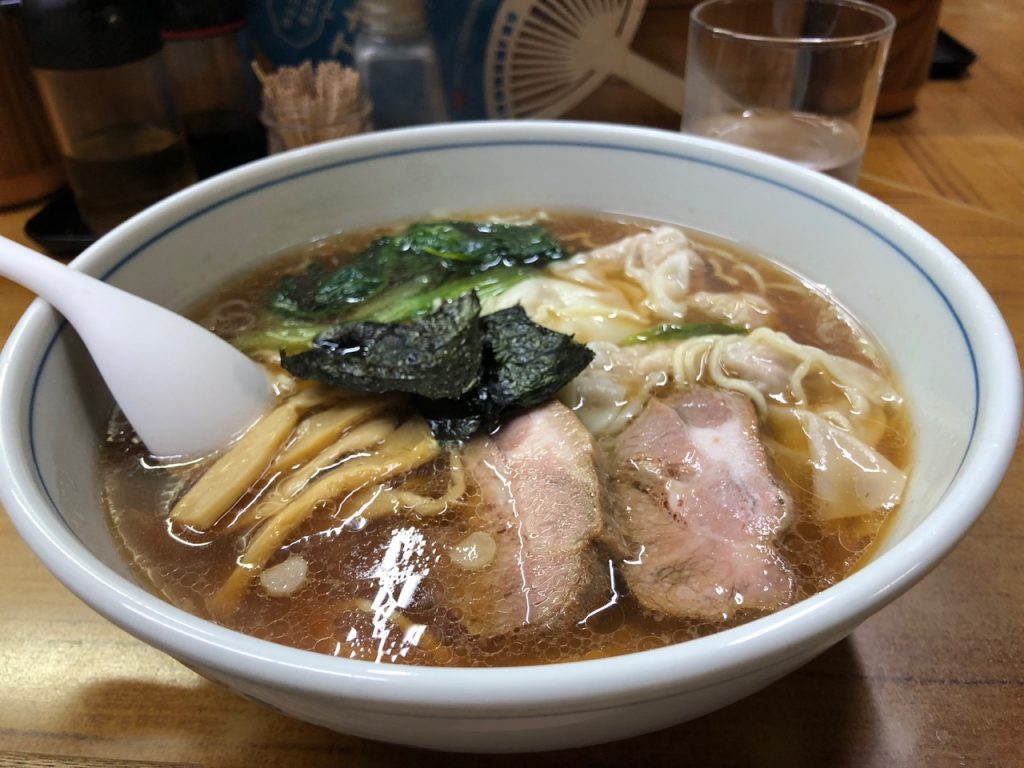
Tomorrow is the start of the big rain, with Typhoon 5 (they get extremely creative in naming their storms on this side of the ocean) on its way up from the Philippines. Woo!
